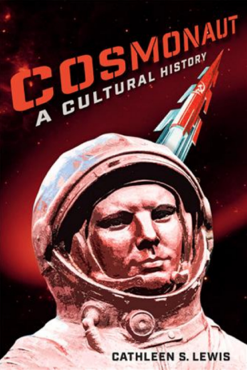Cosmonaut
Breve Descripción
En este libro, Cathleen Lewis analiza cómo se desarrolló la imagen pública del cosmonauta soviético a partir de la década de 1950 y las formas en que este ícono ha sido reinterpretado a lo largo de los años y en la Rusia contemporánea. Recopilando representaciones materiales y culturales del programa de cosmonautas, Lewis brinda una nueva perspectiva sobre la historia de los vuelos espaciales soviéticos, destacando cómo el gobierno ha celebrado figuras como Yuri Gagarin y Valentina Tereshkova a través de periódicos, radio, desfiles, monumentos, museos, películas y incluso sellos postales y pines de solapa.
Breve descrição
Neste livro, Cathleen Lewis discute como a imagem pública do cosmonauta soviético se desenvolveu a partir da década de 1950 e as maneiras pelas quais esse ícone foi reinterpretado ao longo dos anos e na Rússia contemporânea. Compilando material e representações culturais do programa cosmonauta, Lewis oferece uma nova perspectiva sobre a história dos voos espaciais soviéticos, destacando como o governo celebrou figuras como Yuri Gagarin e Valentina Tereshkova por meio de jornais, rádio, desfiles, monumentos, museus, filmes e até correios. selos e alfinetes de lapela.
Full description
In this book, Cathleen Lewis discusses how the public image of the Soviet cosmonaut developed beginning in the 1950s and the ways this icon has been reinterpreted throughout the years and in contemporary Russia. Compiling material and cultural representations of the cosmonaut program, Lewis provides a new perspective on the story of Soviet spaceflight, highlighting how the government has celebrated figures such as Yuri Gagarin and Valentina Tereshkova through newspapers, radio, parades, monuments, museums, films, and even postage stamps and lapel pins.
Lewis’s analysis shows that during the Space Race, Nikita Khrushchev mobilized cosmonaut stories and images to symbolize the forward-looking Soviet state and distract from the costs of the Cold War. Public perceptions shifted after the first Soviet spaceflight fatality and failure to reach the Moon, yet cosmonaut imagery was still effective propaganda, evolving through the USSR’s collapse in 1991 and seen today in Vladimir Putin’s government cooperation for a film on the 1985 rescue of the Salyut 7 space station. Looking closely at the process through which Russians continue to reexamine their past, Lewis argues that the cultural memory of spaceflight remains especially potent among other collective Soviet memories.
Social science
otras áreas de / interés...
other areas of / interest...
outras áreas de interesse...
¿Buscas un título en un área específica?
¿Buscas un título en un área específica?
¿Procurando livros em uma área específica?














